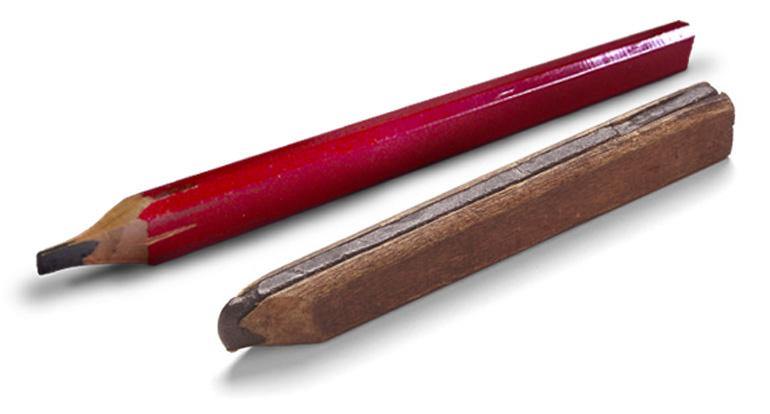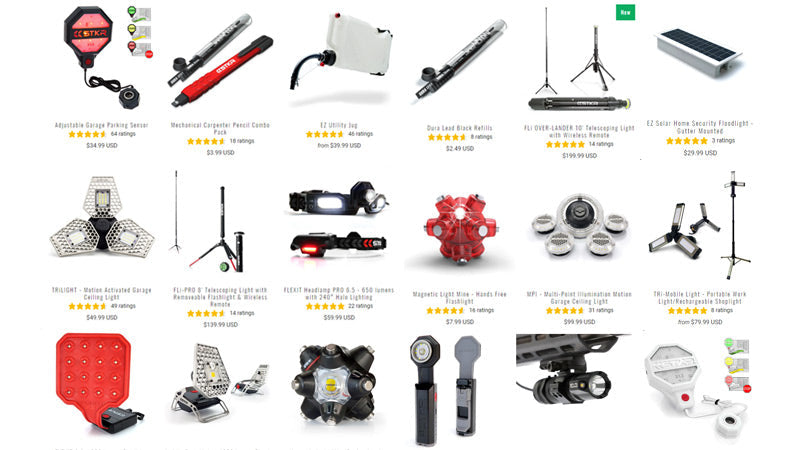
Who Invented the Carpenter Pencil? - Uses, Lead, & Alternatives
Share
There’s an array of different marking tools within the construction industry, but nothing compares itself to the unique and classic design of a carpenter’s pencil. You may have heard that its innovative design was constructed to avoid the pencil rolling away when a carpenter is doing their work. Although this is somewhat true, the main advantage to the shape of the carpenter’s pencil over others is the ability to scribe perfect joints. But it had me thinking the other day, who even invented this revolutionary design?
The carpenter pencil was one of the first pencils to be created. Still to this day, we’re unsure of who invented this marking tool but we are aware of how it was made. The first version of this superb marking tool was constructed by hollowing out small sticks of juniper wood.
As you’re now aware, carpenter pencils have come a long way since they were first invented. Who could have imagined that such a basic tool would have such a massive impact on how we mark objects today. In this article, we’ll be deeper into the structure of this pencil, how to utilize the tool, and showcasing the up-to-date modernized mechanical carpenter’s pencil.
What Kind of Lead Is in A Carpenter's Pencil?
Most pencils use graphite as a lead. However, the difference between your ordinary office pencil over a carpenter’s pencil is how tightly the graphite is compressed. This is why you’ll notice an office-type pencil will be much softer to write or mark with rather than a carpenter’s pencil.
A carpenter’s pencil needs to be manufactured with durability in mind. Throughout the pencil’s life, it’ll be used for marking on rough materials, used in rugged environments, and it’ll be juggled around in a tool bag. Knowing that tools like hammers, chisels, and other construction equipment will be crushing onto the pencil it’ll have to be able to withstand the abuse.

They’re able to achieve this strength due to the material and shape of the pencil. Hardwood is used for external “shielding” and is flatly shaped to increase the physical surface area in which can ultimately help with spreading the potential pressure being applied by the user or the tools within the bag. Combined with the compressed graphite lead makes this pencil much stronger than your ordinary round one that is found in most homes or offices.
How Do You Use a Carpenter’s Pencil?
As simple as it may sound, I commonly see novice and skilled construction workers use their carpenter’s pencil incorrectly. This is generally caused by a bad habit, but something that must be addressed.
- Firstly, make sure that your carpenter’s pencil is sharp and has no defects on the lead. Defects can cause poor and unreadable markings.
- Make sure that the surface you’re going to mark (wood, stone, masonry, brick, etc) is not the same color as the lead. If the material matches the color of the lead, you can colored lead, a paint pen, or alternatively scribe it.
- As the pencil is flat, so is the lead. Therefore, you’ll have two different shapes of lead on the pencil. Here you’ll find a sharp narrow side and a flat wide one. If you’re marking an object, it’s recommended you use the sharp narrow side of the pencil. Doing this will ensure that your markings are more accurate.
- Lastly, mark your object and always measure twice before you mark and to guarantee you’re making the cut!
Other Uses for A Carpenter’s Pencil
Apart from scribing and marking certain building materials, construction workers have come up with some exclusive ideas on how to utilize your carpenter’s pencil.
Quick Measuring – Carpenter pencils are normally around 6-8 inches long and you’re able to mark out common measurements on the pencil (be sure to only do this from the top end of the pencil as you’ll be sharpening the bottom). The most used measurements that are under 8 inches long are 1, 2 and 4”. Being able to quickly measure an object rather than getting your tape measure out can save time.
Spacing – If you’re constructing a decking area, you’ll need to have equal spacing between each wooden plank. Typically, this measurement is around 1/4 to 1/2 inch wide and most carpenter’s pencils are 1/4” thick and 1/2 wide allowing for quick spacing.
Straight edge – The sides of a carpenter’s pencil are straight and allow for an alignment tool. Use the carpenter pencil to butt up to objects to make sure they are straight. The only downside is that sometimes the pencil just isn’t long enough to make the accurate straight edge calculations you want.
As you can see, apart from being an outstanding marking tool that all construction workers need to acquire, it can also be looked at as a multi-tool. Even though these aren’t their intended purposes, construction workers like getting a better bang for their buck, and getting tools with multiple uses is one way to do it.
Alternative to Wooden Carpenter’s Pencils
As mentioned above, I wanted to go into detail about the more modernized carpenter’s pencils. As humans have evolved, they’ve been able to produce a more durable and versatile pencil. With that durability out of the way, newer pencils have been able to focus on ease-of-use features.
In particular, I’m talking about the Mechanical Carpenter Pencil that we at STKR have patented. We’re dedicated to providing useful and innovative tools that create peace of mind for the construction industry.
After extensive research and rigorous testing, we were able to do just that. We’ve been able to create a carpenter’s pencil that is taking the nation by storm, by including high levels of strength that can be found in both the outer pencil and the lead. Making our pencil last a lot longer than your traditional wooden one.
It’s also been fined tuned towards convenience and that’s exactly what it provides. This pencil includes replaceable lead to ensure you get lifetime usage out of this tool. Combining both the durability of the pencil shell and the replacement leads provides you with an unbeatable usage time, something that any construction worker can reek benefits from.
Due to the pencil leads being replaceable, means you won’t have to sharpen the pencil. Allowing it to stay the same size throughout its usage, this adds a whole new meaning of comfortability. If you’re an active carpenter or construction worker, you know how small some pencils can get before you decide to buy a new one and they can become increasingly uncomfortable the smaller they get. But that’s what happens when you have to whittle the end back to sharp after just a few uses.

As you can see, a carpenter pencil has an array of different uses and has been massively improved over the years through trial and error. The traditional wooden carpenter pencil works great but as the world progresses, we can expect to see new and innovative designs that create the classic tools into something even better.



